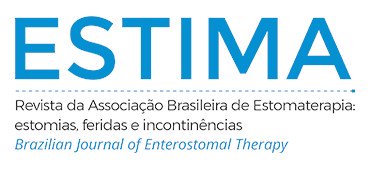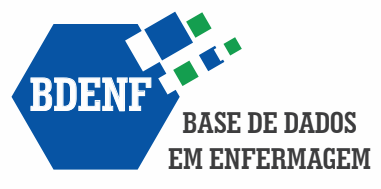Outcome of Surgical Wound in Neuromuscular Scoliosis: Conventional Dressings vs. Negative Pressure Therapy
Abstract
Objective: To evaluate surgical wound complications by comparing conventional dressings and incisional negative pressure therapy (NPT) in spinal surgeries. Method: This was a longitudinal, observational, exploratory, and retrospective study with a quantitative approach, including 50 patients treated with conventional dressings and 50 with incisional NPT, conducted between 2017 and 2021. Data collection involved the analysis of 25 variables, with statistical tests conducted using an alpha level (p-value) of 0.05 and a 95% confidence interval (CI). Results: The overall complication rate was 37%, with a higher incidence of exudate and suture dehiscence. Patients treated with conventional dressings experienced more complications during hospitalization (88.24%) compared to those in the NPT group, who had a higher proportion of complications after discharge (50%) (p = 0.03). No statistically significant differences were found for the other variables. The conventional group also showed a higher frequency of infection one year postoperatively (14% vs. 12.24%). Conclusion: Patients with neuromuscular scoliosis have high rates of surgical wound complications. NPT was associated with a reduction in surgical wound infection and high-volume exudate compared to conventional dressings, although these differences were not statistically significant. Expanding the study sample is necessary to confirm the efficacy and potential superiority of incisional NPT.
Downloads
Metrics
References
Wishart BD, Kivlehan E. Neuromuscular scoliosis: when, who, why and outcomes. Phys Med Rehabil Clin N Am. 2021;32(3):547-56. https://doi.org/10.1016/j.pmr.2021.02.007
von der Höh NH, Schleifenbaum S, Schumann E, Heilmann R, Völker A, Heyde CE. Etiology, epidemiology, prognosis and biomechanical principles of neuromuscular scoliosis. Orthopade. 2021 Aug;50(8):608-13. https://doi.org/10.1007/s00132-021-04126-4
Adams AJ, Refakis CA, Flynn JM, Pahys JM, Betz RR, Bastrom TP, et al. Surgeon and caregiver agreement on the goals and indications for scoliosis surgery in children with cerebral palsy. Spine Deform. 2019;7(2):304-11. https://doi.org/10.1016/j.jspd.2018.07.004
Lee NJ, Fields M, Boddapati V, Mathew J, Hong D, Sardar ZM, et al. Spinal deformity surgery in pediatric patients with cerebral palsy: a national-level analysis of inpatient and postdischarge outcomes. Global Spine J. 2022;12(4):610-9. https://doi.org/10.1177/2192568220960075
Muller-Sloof E, de Laat HEW, Hummelink SLM, Peters JWB, Ulrich DJO. The effect of postoperative closed incision negative pressure therapy on the incidence of donor site wound dehiscence in breast reconstruction patients: DEhiscence PREvention Study (DEPRES), pilot randomized controlled trial. J Tissue Viability. 2018;27(4):262-6. https://doi.org/10.1016/j.jtv.2018.08.005
Desvigne MN. Reducing the risk of postoperative problems with panniculectomies using the Prevena PlusTM 125 incisional management dressing. Cureus. 2020; Jul 22;12(7):e9341. https://doi.org/10.7759/cureus.9341
Deldar R, Abu El Hawa AA, Bovill JD, Hipolito D, Tefera E, Bhanot P, et al. Negative pressure wound therapy prevents hernia recurrence in simultaneous ventral hernia repair and panniculectomy. Plast Reconstr Surg Glob Open. 2022 Mar;10(3):e4171. https://doi.org/10.1097/GOX.0000000000004171
Mehkri Y, Hernandez J, Panther E, Gendreau J, Pafford R, Rao D, et al. Incisional wound vacuum-evaluation of wound outcomes in comparison with standard dressings for posterior spinal fusions in traumatic patients. Oper Neurosurg (Hagerstown). 2023 Feb;24(2):138-44. https://doi.org/10.1227/ons.0000000000000477
Naylor RM, Gilder HE, Gupta N, Hydrick TC, Labott JR, Mauler DJ, et al. Effects of negative pressure wound therapy on wound dehiscence and surgical site infection following instrumented spinal fusion surgery-a single surgeon's experience. World Neurosurg. 2020 May;137:e257-e262. https://doi.org/10.1016/j.wneu.2020.01.152
Ayuso SA, Elhage SA, Okorji LM, Kercher KW, Colavita PD, Heniford BT, et al. Closed-incision negative pressure therapy decreases wound morbidity in open abdominal wall reconstruction with concomitant panniculectomy. Ann Plast Surg. 2022 Apr 1;88(4):429-33. https://doi.org/10.1097/SAP.0000000000002966
Mueller KB, D’Antuono M, Patel N, Pivazyan G, Aulisi EF, Evans KK, et al. Effect of incisional negative pressure wound therapy vs standard wound dressing on the development of surgical site infection after spinal surgery: a prospective observational study. Neurosurgery. 2021 Apr;88(5):E445–E451. https://doi.org/10.1093/neuros/nyab040
Phillips MR, English SL, Reichard K, Vinocur C, Berman L. The safety and efficacy of using negative pressure incisional wound VACs in pediatric and neonatal patients. J Pediatr Surg. 2020 Aug;55(8):1470-4. https://doi.org/10.1016/j.jpedsurg.2019.10.011
Tobiano G, Walker RM, Chaboyer W, Carlini J, Webber L, Latimer S, et al. Patient experiences of, and preferences for, surgical wound care education. Int Wound J. 2023 May;20(5):1687‐99. https://doi.org/10.1111/iwj.14030
Pérez-Acevedo G, Torra-Bou JE, PeiroGarcía A, et al. Incisional negative pressure wound therapy for the prevention of surgical site complications in pediatric patients with nonidiopathic scoliosis: a randomized clinical trial. Int Wound J. 2024 Sep;21(9):e70034. https://doi.org/10.1111/iwj.70034
Calderwood MS, Anderson DJ, Bratzler DW, Patchen Dellinger E, Garcia-Houchins S, Maragakis LL, et al. Strategies to prevent surgical site infections in acute-care hospitals: 2022 update. Infect Control Hosp Epidemiol. 2023 May;44(5):695-720. https://doi.org/10.1017/ice.2023.67
Conway B, Tariq G, Nair HKR, Ousey K, Sandy-Hodgetts K, Djohan R, et al. International best practice recommendations for the early identification and prevention of surgical wound complications. London: Wounds International; 2020.
R Core Team. R: A language and environment for statistical computing. Vienna: R Foundation for Statistical Computing; 2020.
Toll BJ, Samdani AF, Burhan Janjua M, Gandhi S, Pahys JM, Hwang SW. Perioperative complications and risk factors in neuromuscular scoliosis surgery. J Neurosurg Pediatr. 2018 Aug;22(2):207-13. https://doi.org/10.3171/2018.2.PEDS17724
Norman G, Goh EL, Dumville JC, Shi C, Liu Z, Chiverton L, et al. Negative pressure wound therapy for surgical wounds healing by primary closure. Cochrane Database Syst Rev. 2020 Jun;6(6):CD009261. https://doi.org/10.1002/14651858.CD009261.pub6
Mascarenhas DC, Nasra M, Tawfik A, Ghazi J, Ishmael T, Therrien PJ, et al. Incisional negative pressure wound therapy does not affect deep surgical site infection rates in neuromuscular scoliosis surgery. Orthopedics. 2023 Nov-Dec;46(6):373-8. https://doi.org/10.3928/01477447-20230329-03
Downloads
Published
How to Cite
Issue
Section
License
Copyright (c) 2025 Priscila Sales de Lima, Isadora Cristina de Oliveira Yoneiama , Rebeca Sutto da Silva

This work is licensed under a Creative Commons Attribution 4.0 International License.

























